- Home
- [Beginning of Sake] - Let's learn more about Sake!
- 9. Seasonal Events! Explaining how to choose and recommend sake that is suitable for the occasion!
9. Seasonal Events! Explaining how to choose and recommend sake that is suitable for the occasion!
- 2021/10/27
- Write comment
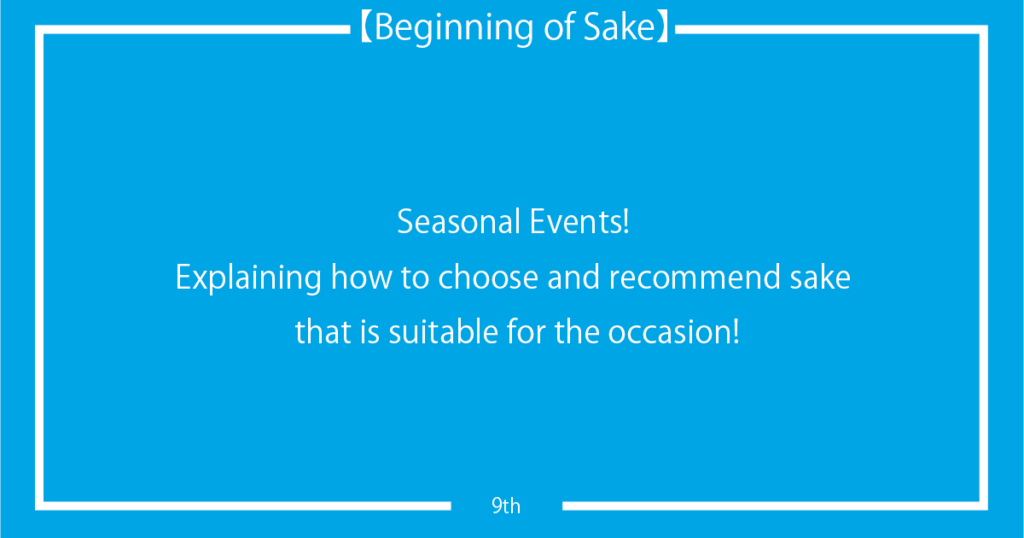
In the previous article, “Taste the seasons! Introducing special types of sake!” , we introduced the sake that is made each season.
This time, we will introduce recommended sake from the perspective of each seasonal event.
In Japan, various anniversaries, events, festivals and other events are held throughout the year.
Alcohol is often served at these events.
For example, “Toso” to drink on New Year’s Day and “San-san-ku-do Cup” at a Shinto wedding ceremony.
Some religions prohibit drinking alcohol.
However, in Shinto, which has been worshiped for a long time in Japan, sake is offered as an offering to Gods along with rice, seafood, and foods of mountain.
When you go to a shrine, such as the one on the approach to Meiji Jingu, you may see many large barrels.
The sake offered to god is called “omiki” and has been an indispensable offering in Japan’s ancient beliefs.
In Japan sake is often served at various events because it is associated with Shinto ritual.
Sake that comes with Japanese events.
Therefore, it seems that there are many opportunities to prepare sake at the time of the event.
So this time, I would like to introduce recommended sake for seasonal events.
Please use it as a reference when you decide to prepare sake at the event.
Contents
Which sake is suitable for spring anniversaries, events and events?
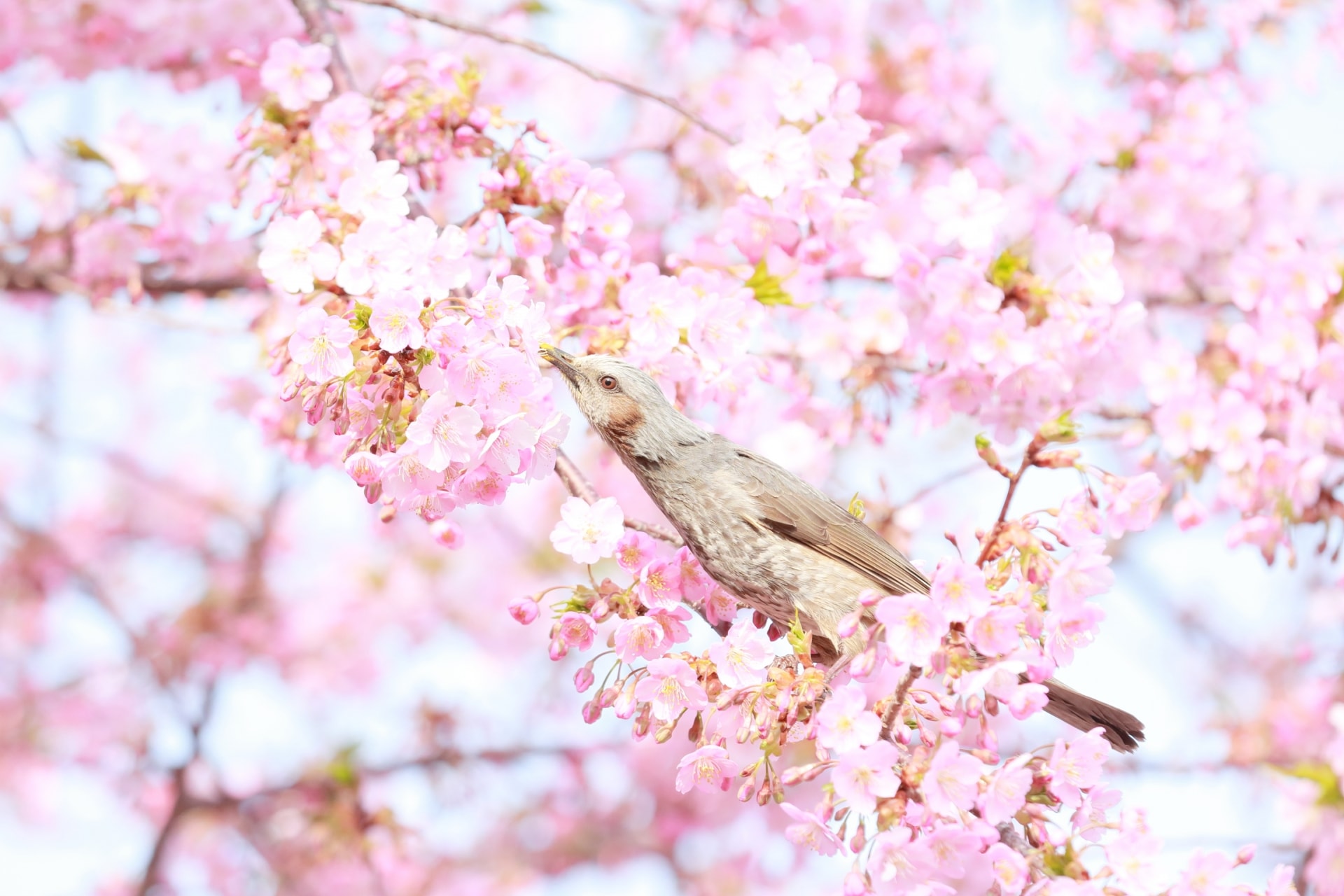
We have summarized the main anniversaries, events of spring (March to May).
[Spring anniversaries, events and events]
- Welcome party / farewell party
- Cherry-blossom viewing
- Outdoor season etc.
The recommended type of sake for spring is ”Kunshu”, which is characterized by its gorgeous aroma and moderate acidity .
(If you are asking “What is” Kunshu “?” , Please see the article “The taste of sake can be divided into” 4 types!” )
Kunshu is a liquor with a characteristic fruity aroma.
Junmai Daiginjo and Daiginjo are applicable.
Many of the flavors are refreshing and reminiscent of spring, and there are a wide variety of flavors, from sweet to dry.
If you drink it with a little chill, the taste will be clearer and more delicious.
In spring, there is also “spring sake” suitable for the season.
The design is reminiscent of spring, such as pink and green, and has a gorgeous scent.
On spring anniversaries and events, you may enjoy the spring-only flavors.
Welcome party / Farewell party
Spring is the season meeting new friends and leaving the old.
In such places, you will inevitably have more opportunities to drink alcohol.
When you decide to prepare sake at a welcome party or a farewell party, it is a good idea to prepare sake named after the main guest.
It’s a good idea to choose the one with the taste he or she likes.
You will also be pleased to give sake related to the person’s place of origin or place of assignment.
Cherry-blossom viewing
Hanami (seeing flowers, especially, seeing cherry blossoms, with drinking alcohol drinks) is an event closely related to sake.
Hanami is said to have started in the Nara period (710 – 794).
Currently, the “flower” which is seen on Hanami is “cherry blossom”.
However, as we learned in high school classic classes, “flowers” used to mean “ume (plum)” in the Nara period.
It seems that the aristocrats of the Nara period drank alcohol while seeing the plum blossoms.
Hanami is an event that has been popular in Japan for a long time
The “Manyoshu”, which contains waka poems written from the mythical era to the middle of the Nara period (759), contains the following waka poems.
Plum blossoms, Saying in dreams, Graceful and quaint flowers, I think, It’s so I floated in sake
(Plum blossoms say in my dreams that I think of myself as a graceful and quaint flower. It is in sake when I am most graceful and quaint.)
This is a poet written by named Otomo no Tabito.
You can see that the aristocrats of the Nara period drank alcohol while seeing the plum blossoms.
It is said that the graceful play of the aristocrats at that time was to see plum blossoms and write waka poems while drinking alcohol, and this became the prototype of “Hanami”.
In the waka poem I mentioned earlier, it says, “Float plum blossoms in sake”.
Even now, when you float the cherry blossoms on sake at Hanami, it feels like something elegant.
Knowing that people 1,300 years ago did the same thing as us and had the same feelings, people’s sensibilities do not change so much over the years.
Also, I’m deeply moved to feel something like a connection between the old people and us.
By the way, why was plum loved in the Nara period?
The Nara period was an era in which Chinese artifacts were actively introduced in order to build a nation state.
It is said that plums were first imported into Japan during this period through the envoy to China in Nara period.
Plums that have just arrived in Japan have become a boom among aristocrats.
Therefore, in the Nara period, it is said that “flowers” were “ume(plum)”.
Why did flower of in “Hanami” become cherry blossoms?
In the Heian period (794 – 1192), when you think of “flower”, it becomes “cherry blossoms”.
Although it is in the latter half of the Heian period, the following waka poems are included in the a collection of poems “Sankashū” by Saigyou Hoshi (1118-1190).
To see the cherry blossoms, in group, people come, cherry blossoms , It is your sin,
(To see the cherry blossoms, people come in group. Cherry blossoms, it is your sin.)
In this waka poem, “Sakura” is written, and it is clear that “flower” in “hanami” means “sakura”.
It also says, “People come in groups to see the cherry blossoms.”
Even now, during the cherry blossom season, many people flock to see the cherry blossoms, but it seems that Japanese people had already swarmed to see the cherry blossoms in the latter half of the Heian period.
It is not clear that the people who came to see the cherry blossoms were watching the cherry blossoms while drinking alcohol.
The oldest record of cherry-blossom viewing, where you drank while watching the cherry blossoms, was the “Kaen no Sechi” held at Shinsen-en Garden on March 28, 812, during the time of Emperor Saga.
By this time, “flowers” had become cherry blossoms.
This is because, in general, the envoy to China was abolished, the influence of Chinese culture diminished, and “Kokufu Bunka (national culture)” rooted in Japanese culture, traditions, and sensibilities became widespread.
It is also said that the cherry blossoms that have existed in Japan for a long time have come to be preferred instead of the plums imported from China.
It may be difficult to say that, but the point is that the plum boom is gone, tired of plums.
The Japanese may be a national character that is easy to heat up and cool down, as it has always been.
During the time of Emperor Saga, sake made from rice using koji and water, and sake made using the same method as today’s sake, was made in the middle of the Heian period in the lawbook called “Engi-shiki”.
Therefore, I think sake was also drunk in the above “Kaen no Sechi “.
As for sake from the Nara period, there is no literature on how to make sake, so we cannot say for sure.
It is speculated that sake made from rice, such as sake, was probably made and drunk.
In the Kamakura period (1192 – 1333), the next era of the Heian period, the custom of cherry-blossom viewing became widespread among the samurai.
In the Edo period, when the times went down, it seems that cherry blossom viewing parties were held among the common people.
It’s been a long time, but like that, Japanese people have been having a cherry-blossom viewing party for at least 1,300 years, and have been drinking alcohol while loving the flowers.
What kind of sake is suitable for cherry blossom viewing?
The sake that is perfect for cherry blossom viewing is, after all, pure rice sake, especially “Junmaishu” .
This is because Junmaishu is made only from rice, just like the sake that people used to drink.
If you want to make sake that tastes the same as the people of the past, then the traditional method of making sake, “Kimoto-zukuri”, is a good choice .
There are the following types of sake made with “Kimoto-zukuri”
· Daishichi Junmai Kimoto
· Otokoyama Kimoto Junmai
· Kizakura Kimoto Yamahai Nama-chozoshu
In addition, Junmaishu is a sake that is suitable for drinking on warm, so it is recommended to enjoy cherry blossom viewing while drinking warm sake on a chilly day.
In addition, if it is a sake that suits the gorgeousness of cherry blossoms and the excitement, the sake that corresponds to “Kunshu” in terms of taste type, such as ” Junmai Ginjo” and “Junmai Daiginjo”, is suitable.
These types of sake tend to have a gorgeous aroma, a pleasant taste, and a delicious taste, which makes them a perfect match for a gorgeous and enjoyable mood.
“New sake” shipped during the cherry blossom season and “Spring sake” made for spring are also good.
Outdoor season
From late April to May, when the weather is calm, you will have more opportunities to go out.
When dining with family and friends on the go, it’s a good idea to enjoy seasonal specialties and sake that matches the spring.
If you want to match the atmosphere of spring, “Kunshu” is good.
On days when you feel a little hot, we recommend the refreshing “Soshu”. You can also try the seasonal “Spring Sake”.
Which sake is suitable for summer anniversaries, events and events?
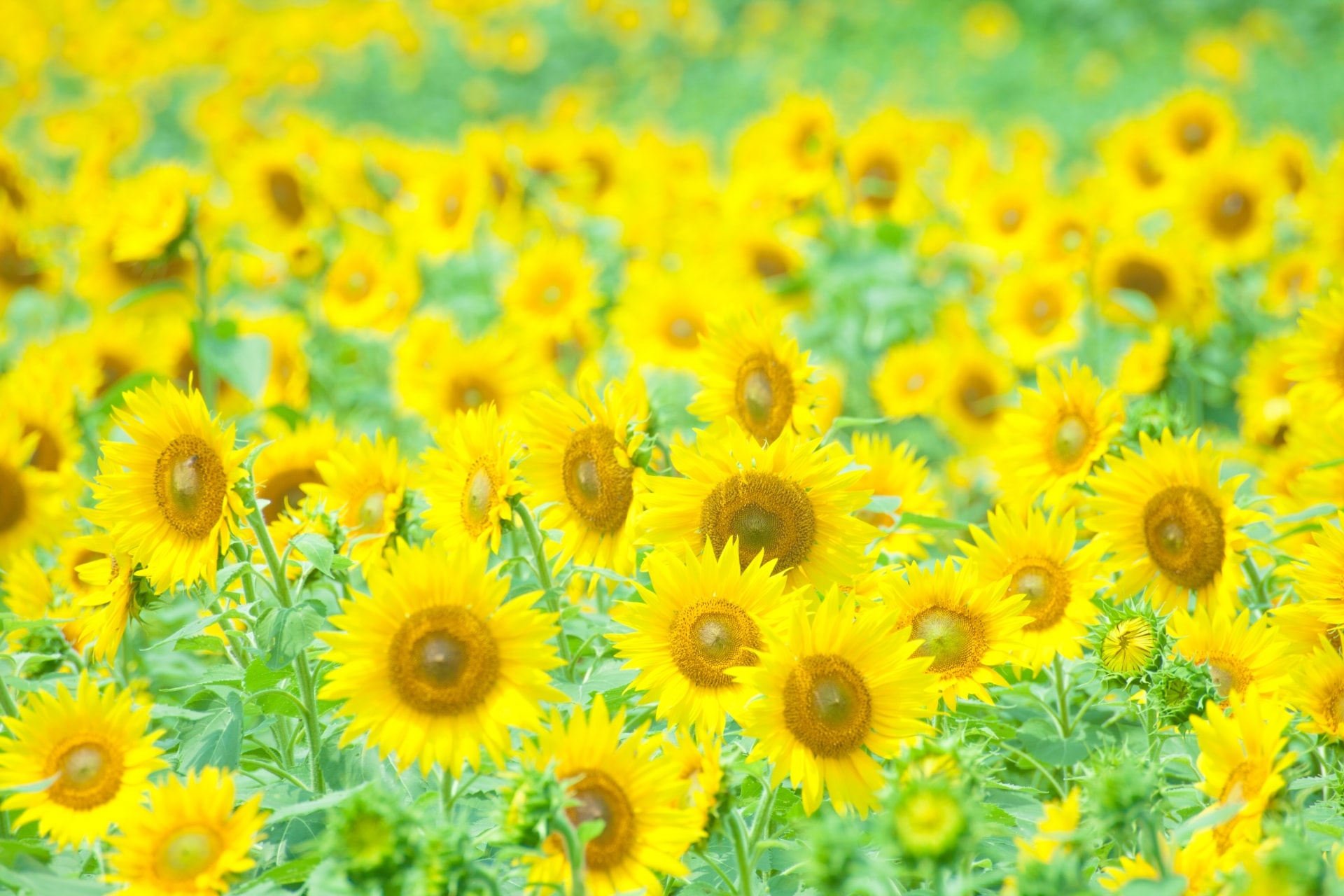
I have summarized the main anniversaries, events, and events of summer (June to August).
[Summer anniversaries, events and events]
- Father’s Day
- Summer gift
- Obon etc.
The recommended taste type for summer is “Soshu”.
“Soshu” is characterized by a refreshing taste and a crisp taste, and it applies to “Honjozo-shu” and “Ginjoshu”.
The aroma is modest, but it is light and easy to drink, and is recommended for beginners of sake.
By chilling it well (5 to 10 degrees), the freshness of the refreshing stands out.
It’s probably the most suitable sake to drink in summer.
Also, in summer, seasonal limited sake called “Summer sake” is shipped.
The bottle is designed to remind you of the refreshing feeling of summer.
It’s a good idea to enjoy summer sake together on summer anniversaries and events.
Father’s Day
If your dad has a favorite sake, it’s a good idea to give him his favorite brand on Father’s Day.
If he does not have a brand he likes, it’s a good idea to ask your father about his taste for sake and then prepare sake that suits his taste.
For example, if he likes refreshing sake, “Kunshu” or “Soshu” is good, if rich sake “Junshu” and “Jukushu” are suitable.
Also, since it is a gift for Father’s Day, let’s express your gratitude by wrapping it or attaching a message card.
Summer gift
Recently, summer gift have decreased.
However, summer gifts are good to express gratitude to those who are indebted to us on a regular basis.
If you want to send it to someone who likes sake, it is good choice to give them sake.
In this season, which makes you feel the heat of summer, “Kunshu” and “Soshu”, which make you feel refreshed, are suitable.
We also recommend the seasonal product “Summer Sake” because it has a refreshing design.
Obon
“Obon” is the days when, they had believed, spirits of ancestors return in Japan.
In the days, people return to their parents’ home.
It would be a good idea to prepare not only sweets and fruits but also sake as a souvenir when you go home.
Sweets and fruits are placed in front of the Buddhist altar when returning home.
If the departed loved sake, they may be pleased to offer it.
There is sake in 1800ml bottle.
It is reasonable because everyone can drink when a large number of family members and relatives gather at home.
It’s still hot during the Obon, so after all, “Soshu” is suitable.
On the other hand, if you’re going home and want something a little more luxurious for the Buddhist altar, we recommend the “Daiginjo-shu” or “Junmai Daiginjo-shu”.
“Daiginjo” and “Junmai Daiginjo” are a little more expensive.
They are often in fine outer boxes, so they are perfect as souvenirs for your homecoming.
Which sake is suitable for autumn anniversaries and events?
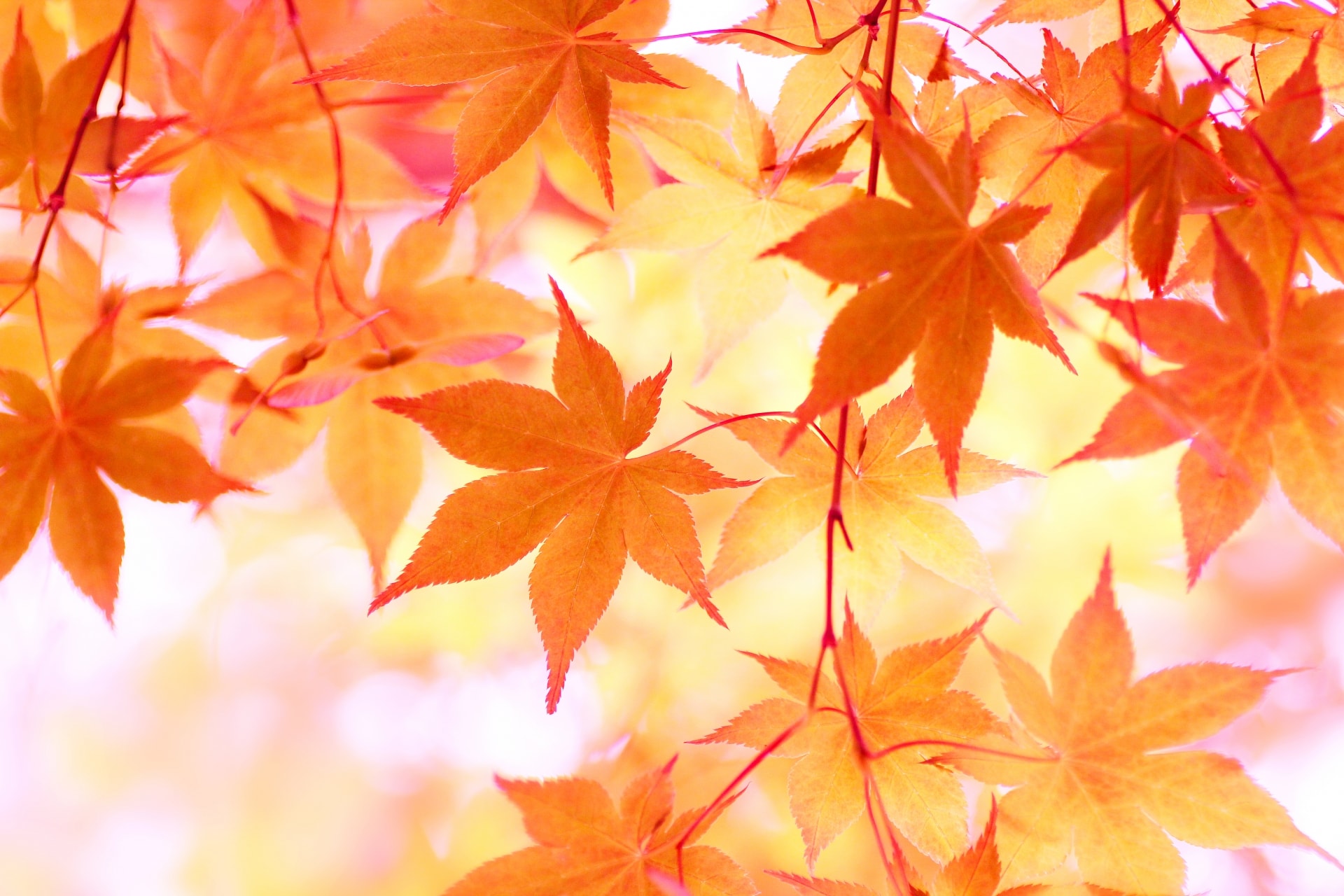
We have summarized the main anniversaries and events of autumn (September-November).
[Autumn anniversaries, events and events]
- Respect for the aged day
- Tsukimi sake
- Sake day, etc.
In autumn, we recommend “Junshu”, which has a rich taste .
Autumn is a season when you can easily get sick due to changes in temperature, so it is a season when you want to eat foods that have the characteristics of “richness” and “rich taste” that boost your immunity and warm your body.
Mushrooms, buckwheat, rice, radishes, and other ingredients that are in season in autumn often have such a function.
Ingredients that have rich taste are also matched with sake, which is also characterized by its richness.
Junshu is with a deep richness and a characteristic Japanese sake flavor that brings out the taste of rice.
“Junmai-shu” is applicable.
You can enjoy the change in taste of Junshu at a wide range of temperatures, but it is recommended to drink it at room temperature or at moderate warm (around 40-45 degrees).
Drinking in this temperature range will deepen your body.
In this season when it gets a little cold, you may want to enjoy warm sake.
Autumn is the season when “Hiyaoroshi” is offered.
Like “Spring Sake” and “Summer Sake”, Hiyaoroshi is a seasonal limited sake.
It often appears from standard brands, so let’s enjoy the taste that can only be enjoyed in the autumn season.
Respect for the aged day
Respect for the Aged Day is a day to honor grandparents or parents, wish for longevity, and celebrate.
Therefore, sake with brand names related to longevity are suitable.
Brands related to longevity include:
- Fukurokuju Daiginjo
- Chitosetsuru Junmai Daiginjo
- Kirei Dry Junmai Sake Hachiho
- Shinshu Kirei Miyama Nishiki Special Junmai
We also recommend sake that contains gold leaf to look good.
Tsukimi sake
In Japan, there is a custom called “Tsukimi Sake” where you can enjoy sake with the moon during the harvest moon.
The recommended sake for viewing the moon is “Hiyaoroshi”, which you can drink only in the fall.
Let’s enjoy the mellow and deep taste with the moonlight.
Sake day
Did you know that October 1st is “Sake Day”?
The sake industry often holds events before and after it.
On the day, let’s enjoy a variety of sake, including “Hiyaoroshi”, which is offered only in the fall .
Why don’t you experience the depth of sake by comparing it with sake that you don’t usually drink?
Which sake is suitable for winter anniversaries and events?
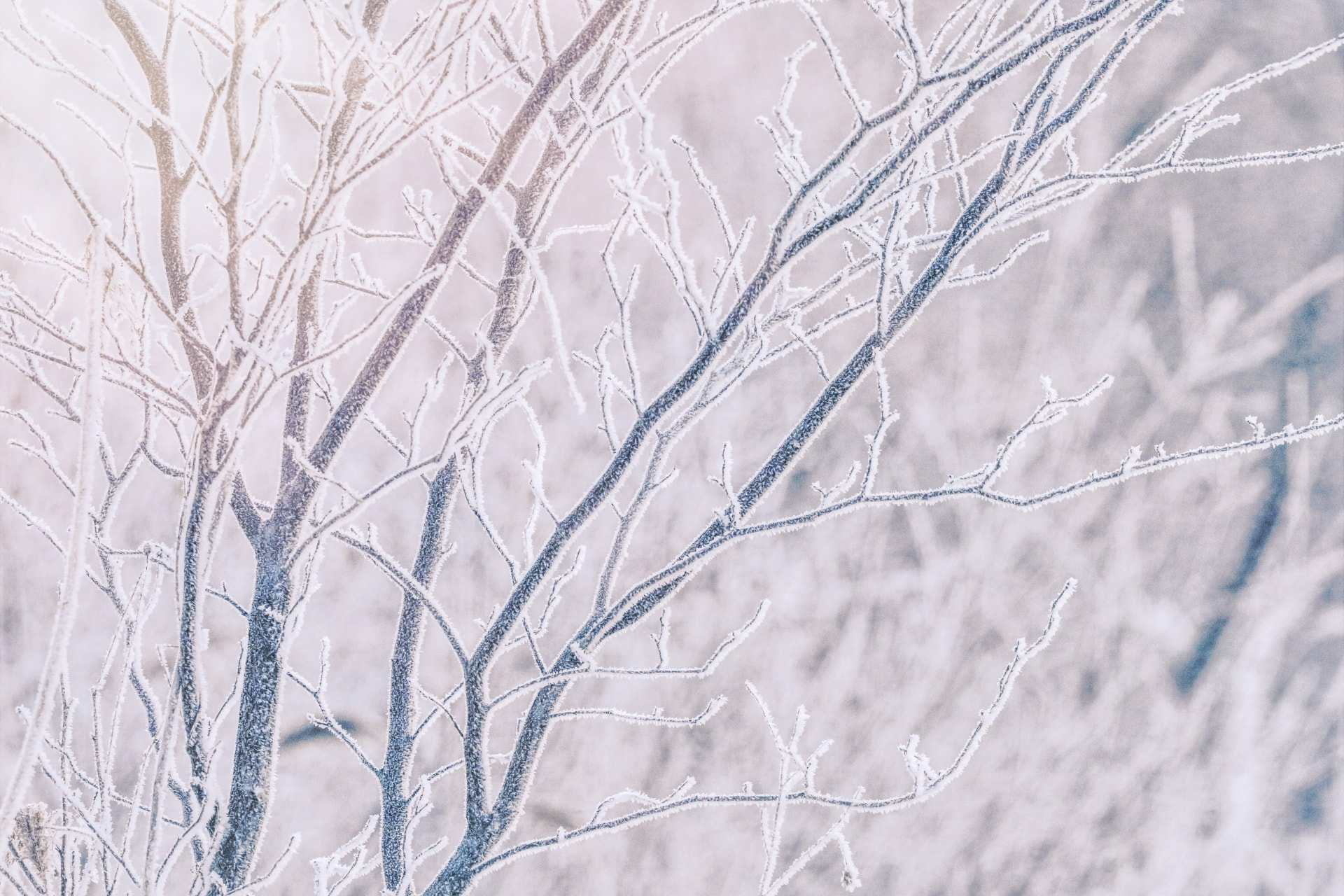
[Autumn anniversaries, events and events]
- Year-end gift
- Year-end party / new year party
- New Year
- Yukimi sake etc.
In winter, we recommend “Junshu”, which has a complex aroma and unique taste .
In addition, winter is a time when colds due to dry air and gastrointestinal fatigue due to year-end parties and New Year’s parties are likely to occur.
Therefore, foods with characteristics such as “low water content”, “contains salt content”, and “high nutritional value” are suitable.
Dishes with these characteristics include smoked dishes and simmered dishes including “nabe (casserole)”.
Sake that goes well with simmered dishes is a “Jukushu” type with a distinctive deep aroma and a unique strong taste.
This sake is suitable for a wide range of temperatures, so you can enjoy a variety of flavors.
Also, don’t miss the winter limited sake called “Shinshu (New sake)”.
It is made from the new rice of the year, so you can enjoy a youthful and fresh taste.
Year-end gift
The year-end gift is good to express gratitude to those who have taken care of us, just like midyear gifts.
Basically, foods such as ham and sausage, Western confectionery and Japanese confectionery, and drinks such as juice, coffee, beer and wine are preferred.
It is also good to give sake in addition to these standard items.
Considering giving a gift for the New Year, auspicious brands and expensive sake with a special feeling are suitable.
For example, ” Raifuku (“happy comes” in Japanese) ” in Ibaraki Prefecture and ” Shichifukujin (“seven Lucky Gods”) ” in Iwate are known as auspicious sake.
Year-end party / new year party
During the year-end party and New Year’s party seasons, “New sake”, which is offered at this time, and “Kanshu (warm sake)”, which warms the cold body, are suitable.
During the year-end party and the new year party, it is easy to put a strain on the stomach and liver.
The internal organs lose their function when cooled, so drink warm sake and enjoy without cooling your stomach and liver.
New Year
New Year, the first month of the year.
It’s the first day, so you want to drink a little high-class sake with a gorgeous and fun mood.
The recommended sake for the New Year is “Ginjo” sake.
Sake such as “Ginjo”, “Daiginjo”, “Junmai Ginjo”, and “Junmai Daiginjo”.
These are often “Kunshu” in terms of taste type .
There are various sakes that are refreshingly light and have a sweet dew-like taste with a gorgeous aroma.
In addition, the prices of “Ginjo” and “Junmai Ginjo” are higher than those of other sake.
The sake called “Special Junmai Daiginjo Genshu Heian Tosatsuru” is sold for 132,000 yen on the Sake Brewery’s website.
As far as I know, this sake is the most expensive.
This sake is “special”, but the price range of Daiginjo and Junmai Daiginjo is about 2,000 to 5,000 yen.
I think it’s a good drink to feel a little rich on New Year’s Day.
Yukimi sake
“Yukimi Sake” where you can enjoy sake while watching the snowy landscape.
In the olden days, it is said that Murasaki Shikibu (famous female writer in Japan lived in around 1000) also enjoyed it, and it is an emotional way of drinking.
In the snowy season, it’s a good idea to enjoy “Junshu” and “Jukushu “ at room temperature or in warm.
In addition, these two flavor types have a wide range of suitable temperatures, and you can drink them chilled, so it is recommended that you drink them chilled in the nearby snow.
It’s so cool!
Summary
We have introduced how to select and recommend sake suitable for each seasonal event.
There are four types of sake flavors, “Soshu”, “Kunshu”, “Junshu”, and “Jukushu”, each of which has a suitable season.
As with seasonal foods, there are seasonal sakes, so let’s try the sakes that can only be enjoyed in each season.
When you enjoy sake from now on, I think it’s a good idea to change your perspective a little and choose the type and brand of taste that suits the season.
Next time is the 10th “Seasonal Ingredients & Sake! Let’s Enjoy a higher-grade taste!”
[References] SAKE SERVICE INSTITUTE(SSI), “MOTOI of NIHONSHU”, NPO FBO 2018
It's our great pleasure if this article is helpful for you.
Comment (0)
No trackbacks yet.

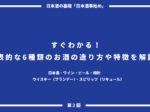




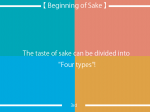
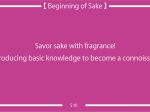
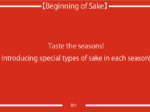
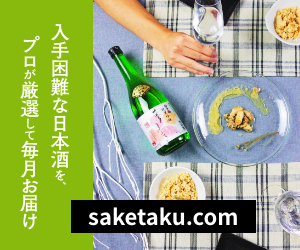
No comments yet.